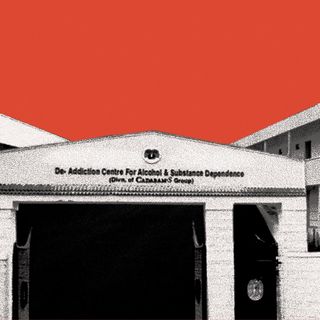
Why Bill Gates’ Climate Philanthropy Doesn’t Fix the Problem
Bill Gates has been a key figure of sustainable innovation. But his strategy for a better world stops short of addressing the root causes of climate injustice.

In a year-end letter published on Tuesday, Bill Gates noted that the future would look bleak for his and everyone else’s grandchildren if we don’t act on climate change now. “We need to revolutionize the entire physical economy — how we make things, move around, produce electricity, grow food, and stay warm and cool — in less than three decades,” he wrote. He’s right about what we need to do — but conflicts remain in terms of defining what the revolution in question would look like.
In a recent video interview with Reuters, Gates said he doesn’t think that the Paris Agreement target of keeping global warming under 1.5 degree Celsius is within reach any longer. But he remains optimistic on one point: that investment in climate innovation is exceeding expectations. Gates himself has invested over $2 billion into climate technology like solar energy, nuclear fission, and other sustainable energy solutions to curb emissions. His philanthropic foundation also invests in public health and education. At the core of his approach toward tackling the climate crisis is innovation — building new technologies to stop accelerating climate change and end carbon dependency, and eventually, moving to a sustainable future.
The philanthropic approach toward climate change, however, looks to the future to solve the problem that’s affecting the world right now. More than that, philanthropy is arguably an undemocratic way of addressing the climate crisis. Without changes to systems that foster wealth inequality, the super-rich have the final say in where resources are distributed, and are unaccountable to anyone. With Bill Gates, it’s towards clean tech — but listening to indigenous communities shows that this is misplaced. In a system where climate injustice is itself fostered by inequality, philanthropic solutions allow the the inequality to persist. They also allow a few individuals to wield power over others, and ultimately, winning over alternate solutions to the climate crisis.
But as many climate activists and environmentalists have pointed out, technocratic solutions don’t get to the root of the problem. Take the focus on keeping temperature rise at bay itself: a recent study showed how even staying within the Paris Agreement’s goals will still be catastrophic for small island nations. Then, there is climate change itself — many stakeholders with the most to lose say that our focus on changing climate ignores the real problem: environmental degradation. Climate change sounds abstract and doesn’t compel any immediate urgency toward changing the way we do things now. Instead, it prompts resources to be directed toward future targets and innovations.
As a result of the focus on temperature and climate, unequal consumption patterns remain unaddressed — especially in a scenario where vast populations continue to not have their basic consumption needs met. “The climate action agenda killed the consumption focused environmental framework. It shifted the objective from equitable consumption to reduction in carbon emissions, secured by developing commercially viable carbon reducing technologies that permitted existing high consumers to maintain their consumption levels,” noted one analysis.
Related on The Swaddle:
To Keep Our Coastal Cities From Drowning in Floods, We Have to Reimagine Land Use
Indigenous knowledge systems have been showing the way for a while: we need to focus on land-use rather than emissions and temperature. This would automatically address the emissions problem: a report stated that protecting indigenous communities, who are “incredible stewards and protectors of their lands and play a significant role in reducing carbon emissions,” is critical to meeting climate action goals. Bad land-use — eroding wetlands, deforestation, and filling open spaces for commercial use — leads to devastating floods. It’s a direct result of a dominant imaginary that devalues the “commons” — environmental features that anybody can share or partake in equally. These are rivers, soil, forests, lakes, or other formations — ones which indigenous communities have long insisted on treating as entities in their own right.
Indigenous approaches to environmental justice have thus inspired the development of earth system law — one that looks at the legal personhood of non-human entities in service of a value system where humans co-exist with the environment. It challenges the dominion model of how we occupy land, and centers reciprocity.
Moreover, nations from the Global South face the brunt of climate change without being contributors to it — they’re also the site of pollution and waste disposal from the Global North. There is also the issue of “frequent siting of environmentally hazardous industries in predominantly minority communities,” according to The Lancet. Inequality and imperialism, then, are the real drivers of environmental degradation — carbon emissions are just the most visible symptom of it.
“… unless we tackle the ‘root causes of vulnerability’ (i.e. the systemic and historically laden inequities based on extraction, colonialism, anthropocentricism etc.) through social and behavioural approaches, these tech fixes are, at best, bandages,” Chandni Singh, senior research consultant at the Indian Institute of Human Settlements, told The Swaddle earlier this year. “Transformational change, the type needed for grave problems, requires a complete reimagination of human-nature relationships, societal functioning, and changes in our financial systems.”
We don’t need to come up with new solutions for the climate crisis, nor do we need to direct resources toward developing knowledge. It already exists. The recently released Intergovernmental Panel on Climate Change report acknowledges this much, and warns that indigenous knowledge about the changing climate are at risk of being lost due to oral knowledge transfer in these communities. Moreover, they suffer the brunt of climate disasters, and aren’t at the negotiating tables in global climate conversations.
Environmental injustice is harming and killing people — the most vulnerable of communities — today. We’re facing climate catastrophe because of human activity that creates emissions, yes — but social injustices create the conditions for environmental degradation. Channelling financial resources toward sustainable solutions may be a short-term fix — but it doesn’t get to the heart of why we’re in this crisis in the first place.
Rohitha Naraharisetty is a Senior Associate Editor at The Swaddle. She writes about the intersection of gender, caste, social movements, and pop culture. She can be found on Instagram at @rohitha_97 or on Twitter at @romimacaronii.
Related


Maharashtra Government Institutes Panel to Track Inter‑Caste, Inter‑Faith Marriages
